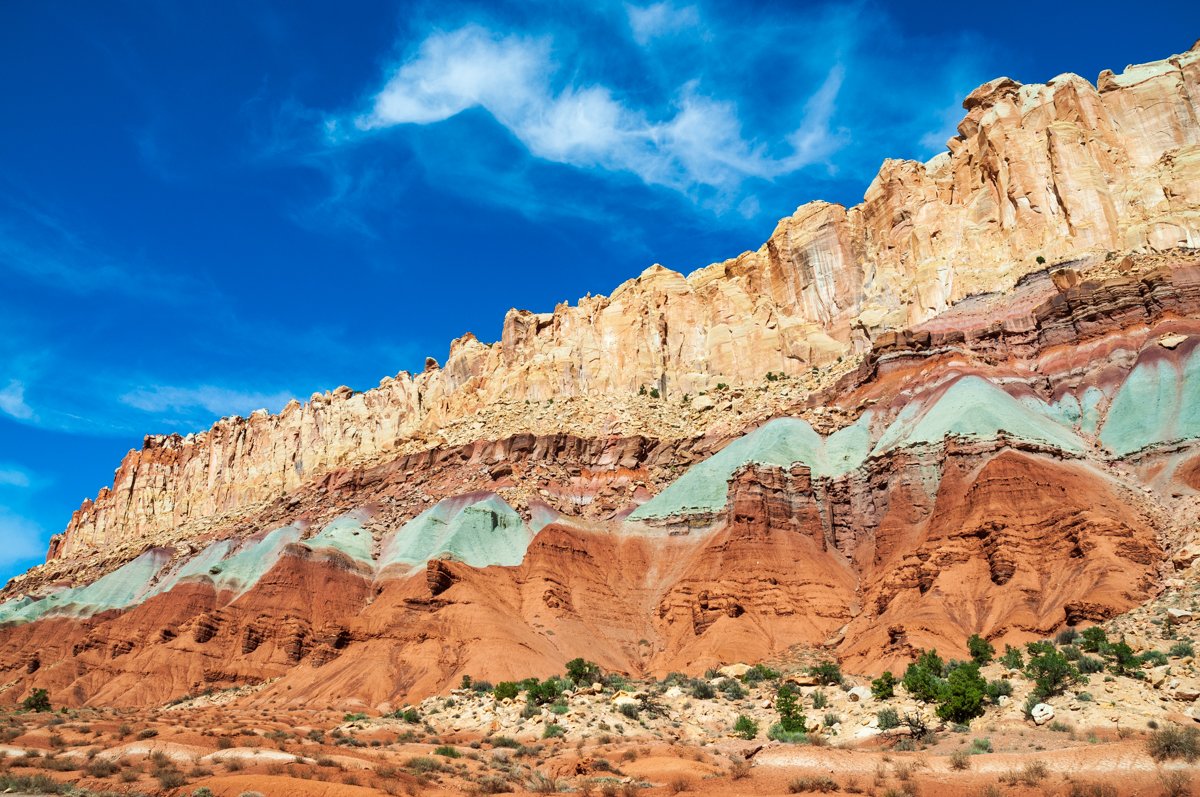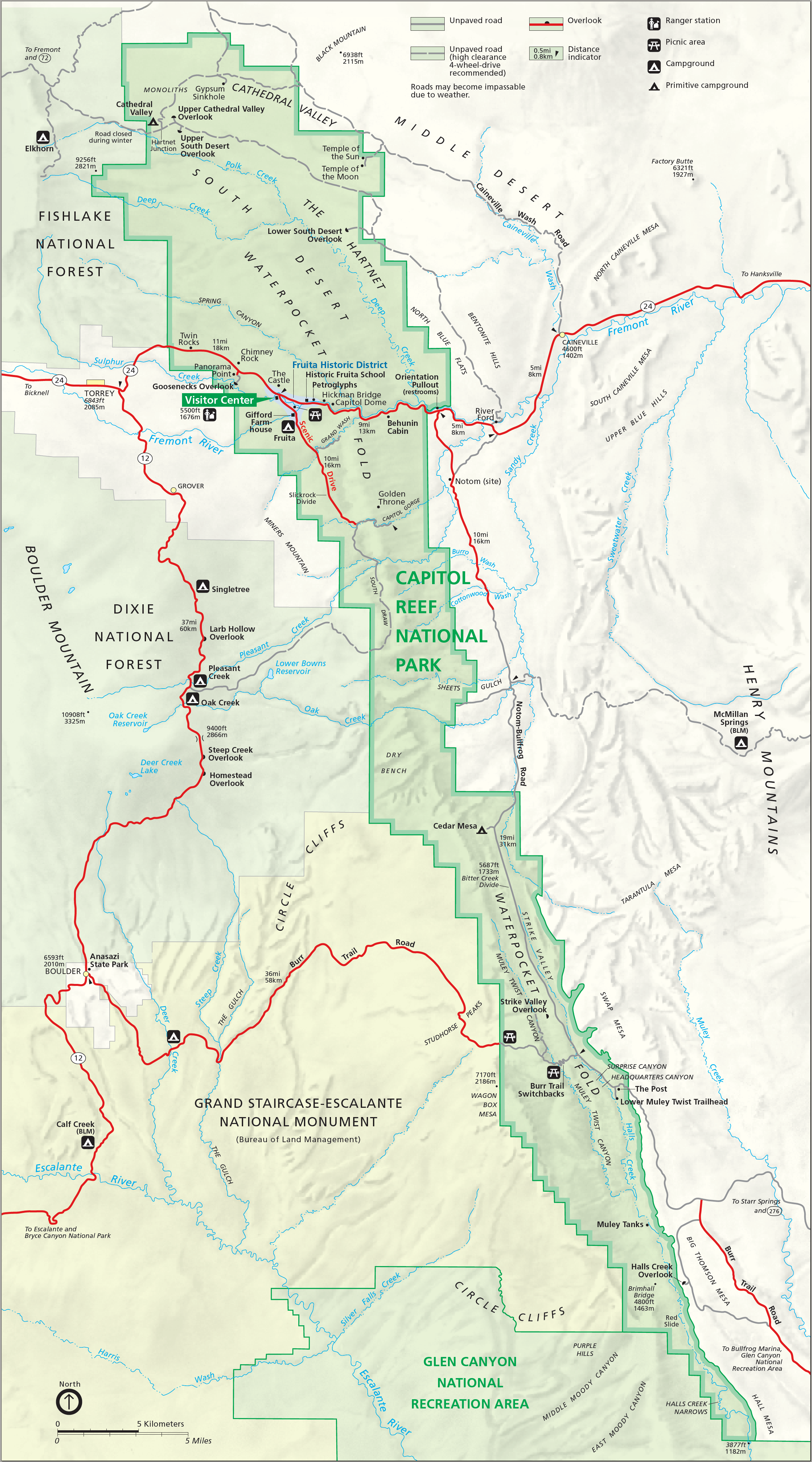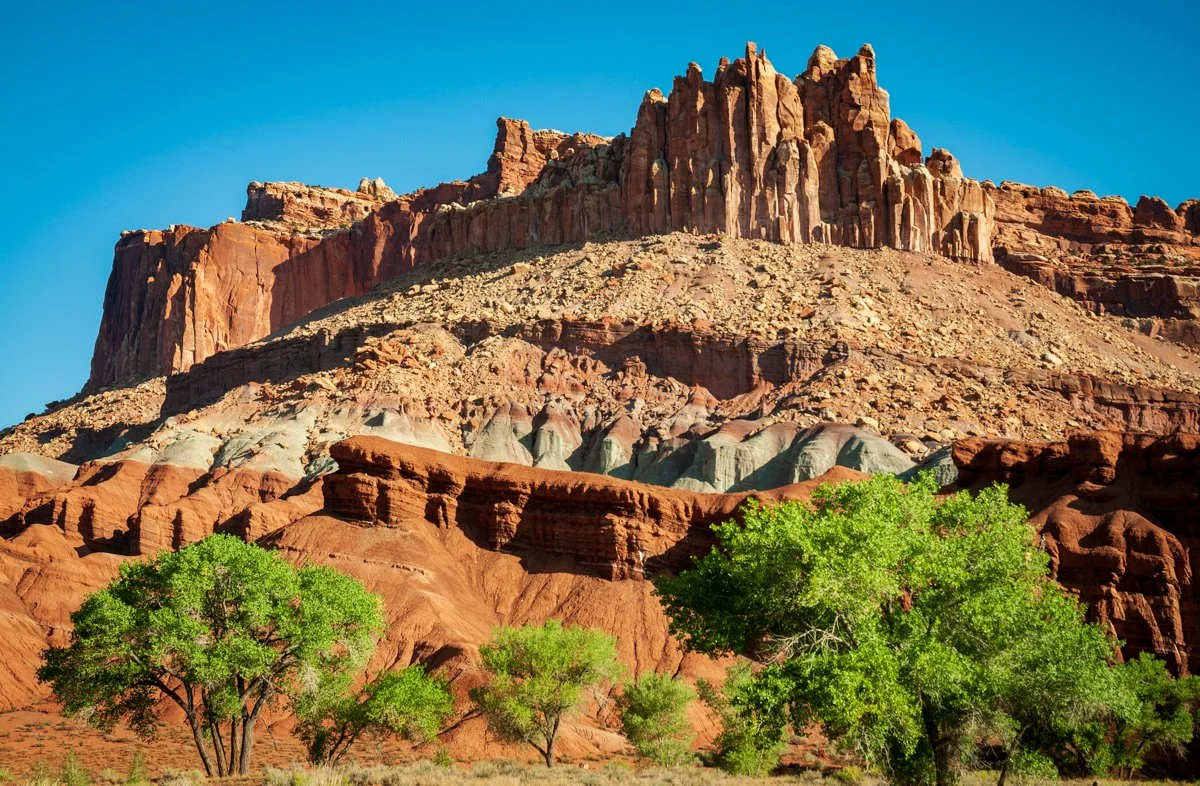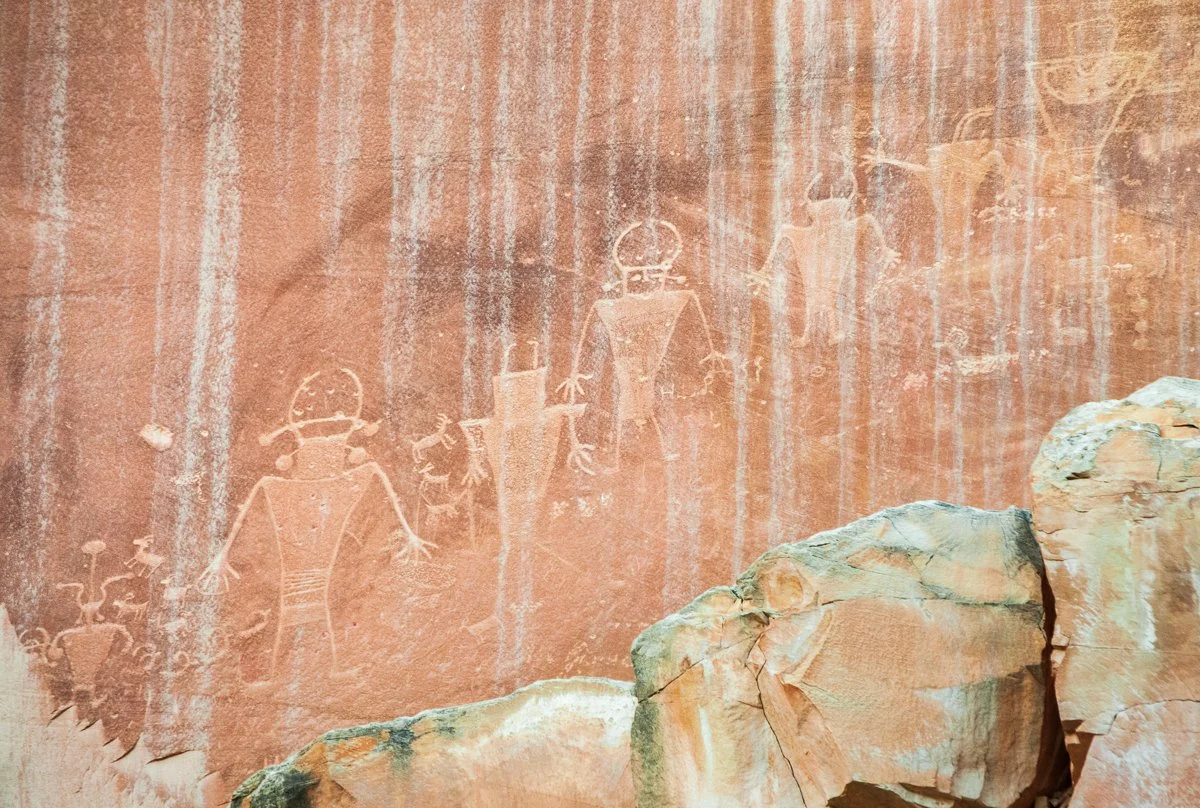Capitol Reef National Park (Utah)
Amid the striking landscapes of south-central Utah, Capitol Reef National Park is an awe-inspiring treasure trove of geological wonders and historical intrigue. This remarkable park, distinguished by its vividly colored cliffs, dramatic domes, and labyrinthine canyons, unveils a world where the forces of nature have painted a magnificent canvas over millions of years.
Capitol Reef National Park, established in 1971, is characterized by its centerpiece, the Waterpocket Fold. This impressive geologic feature, stretching over 100 miles in length, is a giant wrinkle in the Earth's crust where layers of rock have been bent, fractured, and exposed.
The park's name reflects the combination of white Navajo Sandstone domes resembling the U.S. Capitol building and the barrier created by the Waterpocket Fold, akin to a coral reef.
The rich tapestry of colors within Capitol Reef showcases the park's diverse geology, with vibrant hues of red, orange, and white adorning the cliffs and domes. These stunning features are complemented by the presence of natural arches, bridges, and petroglyphs, providing a glimpse into the ancient history of the region.
The park's unique environment supports a wide variety of plant and animal life, which has adapted to the challenges of the desert landscape. Juniper trees, prickly pear cacti, and vibrant wildflowers share the land with mule deer, desert bighorn sheep, and countless bird species, all contributing to Capitol Reef's thriving ecosystem.
Visitors to Capitol Reef National Park can partake in a plethora of recreational activities that highlight the park's natural and cultural wonders. Hiking trails cater to various skill levels, offering breathtaking views of the geological formations, serene canyons, and lush riparian areas. For those with a keen interest in history, the park's well-preserved petroglyphs and the remnants of the historic Fruita community provide a fascinating window into the past.
The nearby town of Torrey serves as the gateway to Capitol Reef National Park, providing visitors with a warm welcome and a range of amenities. With a selection of accommodations, dining options, and local attractions, Torrey ensures that every visitor can enjoy the park's spectacular beauty in comfort.
MUST SEE SITES
Scenic Drive: This 7-mile drive takes visitors through the park's stunning landscapes, including colorful rock formations, deep canyons, and the towering Waterpocket Fold. There are several pullouts and scenic overlooks along the way, offering great photo opportunities and views of the surrounding landscape.
Hickman Bridge: This moderate 2-mile round trip hike takes visitors to the stunning Hickman Bridge, a massive natural arch that spans 133 feet across a deep canyon. The hike offers stunning views of the surrounding landscape and is a great spot for photos.
Capitol Gorge: This scenic drive and hiking trail takes visitors through a narrow canyon, past historic pioneer inscriptions, and to the stunning Cassidy Arch, a massive natural arch that spans 170 feet across a deep canyon. The hike is moderately difficult but offers stunning views of the surrounding landscape.
Fruita Historic District: This historic district features several well-preserved pioneer buildings and orchards, as well as a museum and visitor center. Visitors can learn about the area's history, take a guided tour of the buildings, or simply relax and enjoy the stunning views.
Cathedral Valley: This remote area of Capitol Reef National Park offers a stunning display of towering sandstone formations and rock spires. Visitors can take a scenic drive along the Cathedral Valley Loop Road to experience this unique landscape, which includes the famous Temple of the Sun and Temple of the Moon formations.
GETTING THERE
The most popular ways to arrive at Capitol Reef National Park are by car and air. If you're driving, the park is located in south-central Utah and can be accessed via several routes. From the north, you can take Interstate 70 to State Route 24 and then follow signs to the park. From the south, you can take State Route 95 to State Route 24 and then follow signs to the park.
The closest airport to Capitol Reef National Park is the Canyonlands Field Airport, which is about two hours away by car. The airport offers flights from several cities, including Denver and Phoenix. Another option is the Salt Lake City International Airport, which is about three and a half hours away by car and offers more flights and destinations year-round.
Once you arrive at Capitol Reef National Park, the best way to get around is by car. The park has a scenic drive that offers stunning views of the park's many geological formations, and there are also several hiking trails to explore, ranging from easy walks to challenging hikes.
GATEWAY COMMUNITIES
The town of Torrey serves as the primary gateway to Capitol Reef National Park, offering various accommodations, dining options, souvenir shops, and outdoor recreation equipment rentals. Other nearby communities, such as Bicknell and Loa, also provide lodging and amenities.
ACCOMMODATIONS
Visitors can find various lodging options in the area, including hotels, motels, and vacation rentals. The park also features a campground, the Fruita Campground, which provides both tent and RV sites.
CAMPGROUNDS
Capitol Reef has one developed campground, Fruita Campground, which is located near the park's primary visitor center. It offers tent and RV sites, as well as basic amenities like restrooms and drinking water. There are also several primitive campgrounds within the park, such as Cathedral Valley and Cedar Mesa, which offer more remote camping experiences.
WEATHER/CLIMATE
Capitol Reef has a high desert climate, with hot summers and cold winters. Average summer temperatures can reach the 90s Fahrenheit, while winter temperatures can range from the 20s to 40s. Visitors should be prepared for potential thunderstorms during the summer months and occasional snowfall in the winter.
RECREATION OPPORTUNITIES
Numerous recreational opportunities await visitors including hiking, backpacking, scenic drives, rock climbing, and wildlife viewing. The park's most popular hike is the Hickman Bridge Trail, which provides stunning views of the natural bridge and surrounding landscapes. Other notable hikes include the Capitol Gorge Trail, the Grand Wash Trail, and the Rim Overlook Trail. Wildlife viewing is also popular, with mule deer, desert bighorn sheep, and a variety of bird species inhabiting the area.
VISITOR CENTER
The Capitol Reef Visitor Center, located near the park's primary entrance, provides information about the park's history, geology, wildlife, and recreational opportunities. Rangers are available to offer guidance and answer questions. The visitor center is open daily, year-round, except for major holidays and with reduced hours during the off-season.
THINGS TO KNOW
Entrance Fee: $20 per vehicle (7-day pass), $15 per motorcycle (7-day pass), $10 per person (7-day pass), or $35 for an annual park pass.
Pet Policy: Pets are allowed in developed areas, on paved roads and parking lots, and in campgrounds but must be leashed and under control at all times. Pets are not allowed on hiking trails, at overlooks, or in the backcountry.
Hours of operation: Capitol Reef National Park is open 24 hours a day, 7 days a week. The Capitol Reef Visitor Center has specific operating hours, which can be found on the park's website.
Website: https://www.nps.gov/care/index.htm
Contact phone number: (435) 425-3791
Address: Capitol Reef National Park, 52 West Headquarters Drive, Torrey, UT 84775, United States




